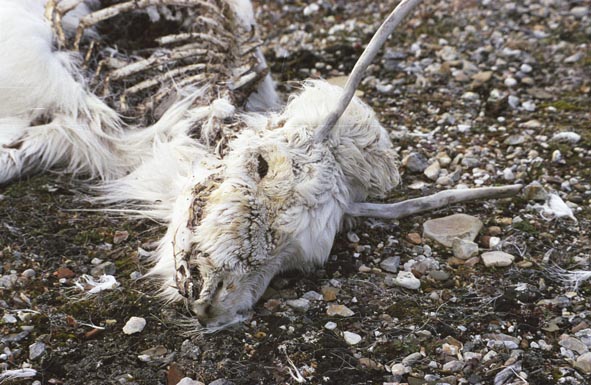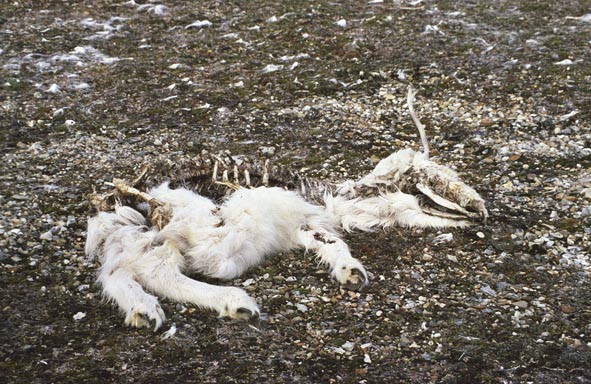
Early 19th century reindeer almost extinct because of humans.
Since reindeer hunting was banned in 1925 the population has grown again. In
1969 a Dutch expedition started to observe and count the reindeers at Edge°ya.
Also that year the Norwegians did their first counting from the air. It turned
out that there were 1500 reindeers on the island. In 1973 the number had been
increased to 1700.
Very few reindeer are found in the interior. This is easy to explain
because there's almost no vegetation in the valleys with their big glaciers and
steep slopes. Although there is plenty of food for them to find near the
coastlines, food can be a difficult problem. The major part of the year, nine
months, their food supply is covered by snow and hard to find. During the summer
(the other three months) the reindeer have a big appetite to build up
sufficient fat deposits for the coming winter.
A crucial moment is the end of the winter when periods of intermittent thawing
are followed by frosts which ice up the vegetation. Scraping for food becomes
difficult and animals suffer bloody cuts to their mouths.
 |
It is in this difficult period, right before the summer,
that many reindeer die of starvation.
|
Research shows that it is mainly the males who do not survive the winter. Their ages can run up to 10 years while the females can live to 16 years old.
Both sexes have antlers shedding them every year and growing new ones. The
bull has wider, shovel-like, forward tines.
Compared to its relatives in Europe and Canada the Svalbard reindeer is
plumper and has shorter legs.
Also unlike their relatives they are usually encountered in small
groups of 2 or 3 animals , instead of big herds. Most probably this is because they don't have any
natural enemies.

bron: Rendieren en hun milieu - een expeditie naar Spitsbergen
Nederlandse Stichting voor
Arctisch Natuurwetenschappelijk Onderzoek